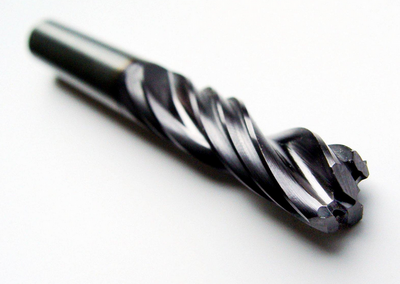Tool Tips: How to Choose the Right Drill Bit for Your Project
Avex Tool Shop on 26th Feb 2024
When it comes to DIY projects or professional construction work, choosing the right drill bit is essential for achieving precise and efficient results. The wide variety of drill bits available on the market can be overwhelming, but with the right knowledge, you can select the perfect drill bit for your project.
In this blog, we will explore the ins and outs of choosing the right drill bit to make your drilling tasks easier and more effective. Whether you're a seasoned pro or a beginner, understanding the different types of drill bits and their applications will help you make informed decisions.
1. Understand the Basics
Before diving into the specifics of drill bits, it's important to have a fundamental understanding of how they work. A drill bit is a cutting tool designed to create holes in various materials, such as wood, metal, concrete, or plastic. It does so by rotating rapidly and applying pressure to the material, removing material as it goes.
2. Consider the Material
The first and most crucial factor in selecting the right drill bit is to consider the material you'll be drilling into. Different materials require different types of drill bits. Here are some common drill bit types and their suitable materials:
Twist Drill Bits
These are the most versatile and widely used drill bits. They work well with wood, plastic, and most metals. However, for very hard metals like stainless steel or hardened steel, you may need specialty drill bits.
Masonry Drill Bits
These are designed for drilling into concrete, brick, stone, or other masonry materials. They typically have a carbide tip for added durability and effectiveness.
Wood Drill Bits
Wood bits are optimized for drilling into wood and other soft materials. They usually have a sharp point and flutes designed to remove wood chips efficiently.
Metal Drill Bits
For drilling into metal, you'll want to use HSS (High-Speed Steel) or cobalt drill bits. These are specifically designed to handle the toughness of metal without dulling quickly.
3. Know the Shank Type
Drill bits come with different shank types, and it's essential to choose the one that's compatible with your drill. The two most common shank types are:
Round Shank
These are the standard shanks that fit into most drills. They are compatible with both hand drills and power drills.
Hex Shank
Hex shank bits have a hexagonal shape, providing a more secure grip in certain types of drills, such as impact drivers. Make sure your drill can accommodate a hex shank if you choose this type.
4. Understand the Drill Bit Coating
Many drill bits come with various coatings that enhance their performance and durability. Some common coatings include:
Black Oxide
Provides corrosion resistance and reduces friction. Suitable for general-purpose drilling in wood and metal.
Titanium Nitride (TiN)
Offers excellent wear resistance and an extended lifespan. TiN-coated bits are ideal for drilling into hard materials like metal.
Cobalt Coating
Designed for drilling into tough materials like stainless steel. Cobalt bits are heat-resistant and maintain their sharpness.
5. Consider the Bit Size
The size of the drill bit refers to its diameter, and it's crucial to choose the right size for your project. Drill bits come in various sizes, typically measured in inches or millimeters. To determine the appropriate size, you should know the diameter of the hole you need to drill.
6. Pay Attention to Drill Bit Geometry
The geometry of a drill bit affects its cutting performance. Two essential aspects of drill bit geometry are the point angle and the helix angle:
Point Angle
This is the angle formed at the tip of the drill bit. Different materials require different point angles. For instance, a standard twist drill bit typically has a 118-degree point angle, which works well for general-purpose drilling. However, materials like metal may require a 135-degree point angle for better performance.
Helix Angle
The helix angle refers to the angle between the flute and the centreline of the drill bit. It affects chip evacuation and cutting efficiency. Steeper helix angles are better for soft materials, while shallower angles are suitable for harder materials.
7. Safety First
Lastly, always prioritize safety when working with drill bits. Wear appropriate safety gear, including safety glasses and hearing protection. Follow the manufacturer's recommendations for your drill and bit combination and be mindful of the drill's speed and feed rate to prevent overheating or breaking the bit.
In conclusion, choosing the right drill bit is a crucial step in achieving successful drilling outcomes. By understanding the material you're working with, the type of drill bit required, and the various factors that influence a bit's performance, you can make informed decisions and ensure your drilling tasks are efficient and accurate. So, whether you're a professional contractor or a DIY enthusiast, remember to consider these factors when selecting your drill bits. Happy drilling!
Avex Tool Shop is an online tool shop that offers a comprehensive range of industrial and engineering tools to manufacturing, repair, and service companies, artisans, mechanics, tradespeople, hobbyists, resellers, and distributors. Whatever your needs are, Avex has the solution for you. Visit our store today, or our online shop, for the best deals, and best quality, that money can buy.


